Made in USA Coins are gaining traction heading into the final week of May, with AVA, Solana (SOL), Pi Network (PI), Uniswap (UNI), and Worldcoin (WLD) all drawing attention. AVA surged nearly 10% amid renewed AI interest, while SOL saw rising institutional accumulation despite ETF delays.
PI rebounded above $0.80 as momentum builds despite lingering ecosystem concerns. Meanwhile, UNI faces legal pressure from Bancor, and WLD remains in the spotlight following regulatory challenges and a U.S. expansion push.
AVA
AVA is the native token of Holoworld, an AI-powered storytelling platform designed for creators, brands, and developers.
The ecosystem enables users to craft immersive experiences using customizable AI avatars, lifelike animations, and voice-based interactions. It claims to have over 1 million users and tens of millions of interactions.
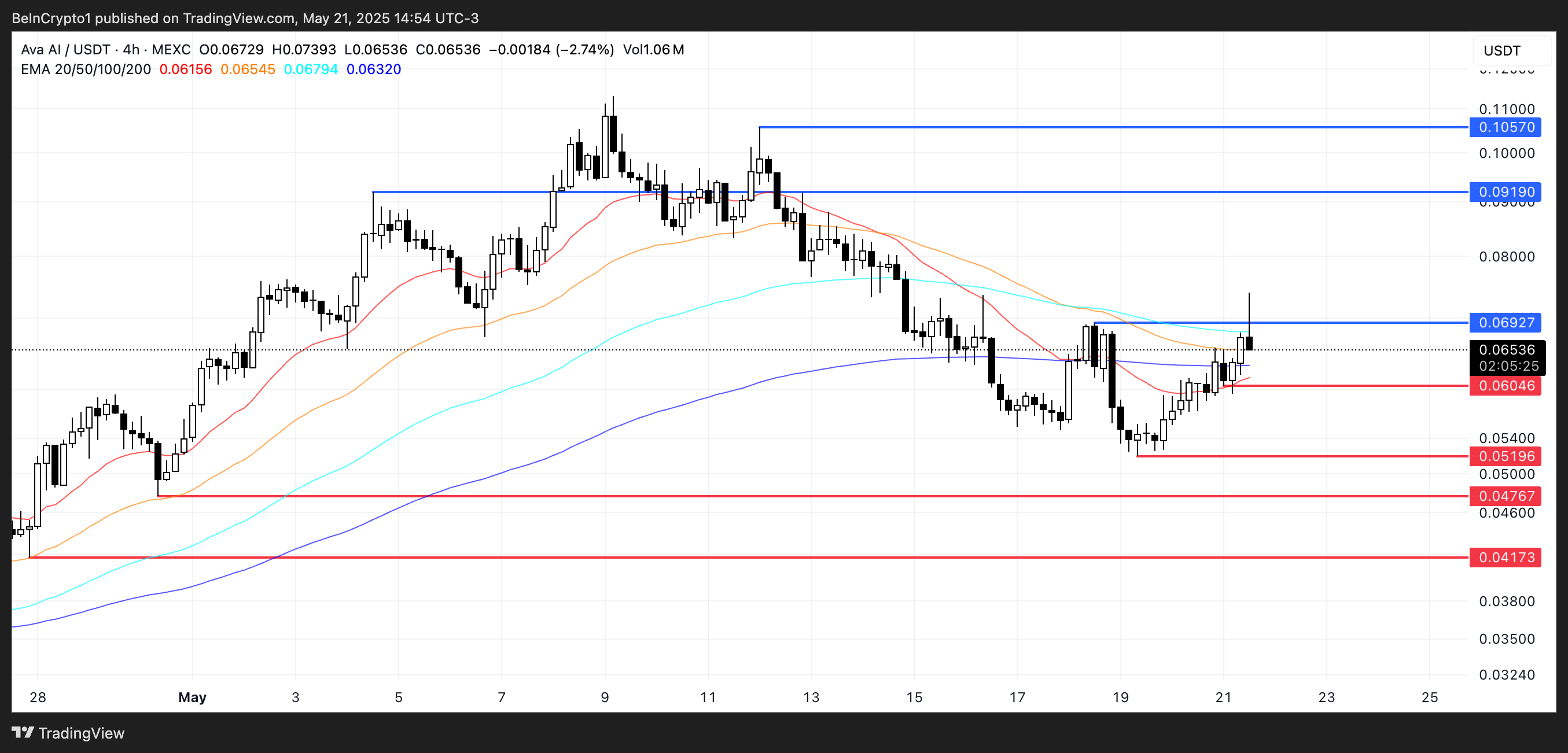
Originally launched on Solana’s PumpFun launchpad, AVA currently holds a market cap of around $65 million and has climbed nearly 10% in the last 24 hours amid renewed interest in AI-themed tokens.
Technical indicators are turning bullish, with AVA’s EMA lines suggesting a golden cross could form soon. If this momentum holds, the token could rise to challenge resistance at $0.069, and a breakout may open the path toward $0.0919 and even $0.015.
However, if bullish momentum fades and the $0.060 support level fails, the token could retrace to $0.0519, and potentially fall to $0.047 or even $0.0417 if the downtrend intensifies.
Solana (SOL)
Solana is seeing increased accumulation from institutional investors in May 2025. Whales have staked large amounts, and some have invested millions into Solana-based assets.
Over 65% of SOL’s supply is now staked. Q1 app revenue reached $1.2 billion, the highest in the past year, showing strong ecosystem growth.
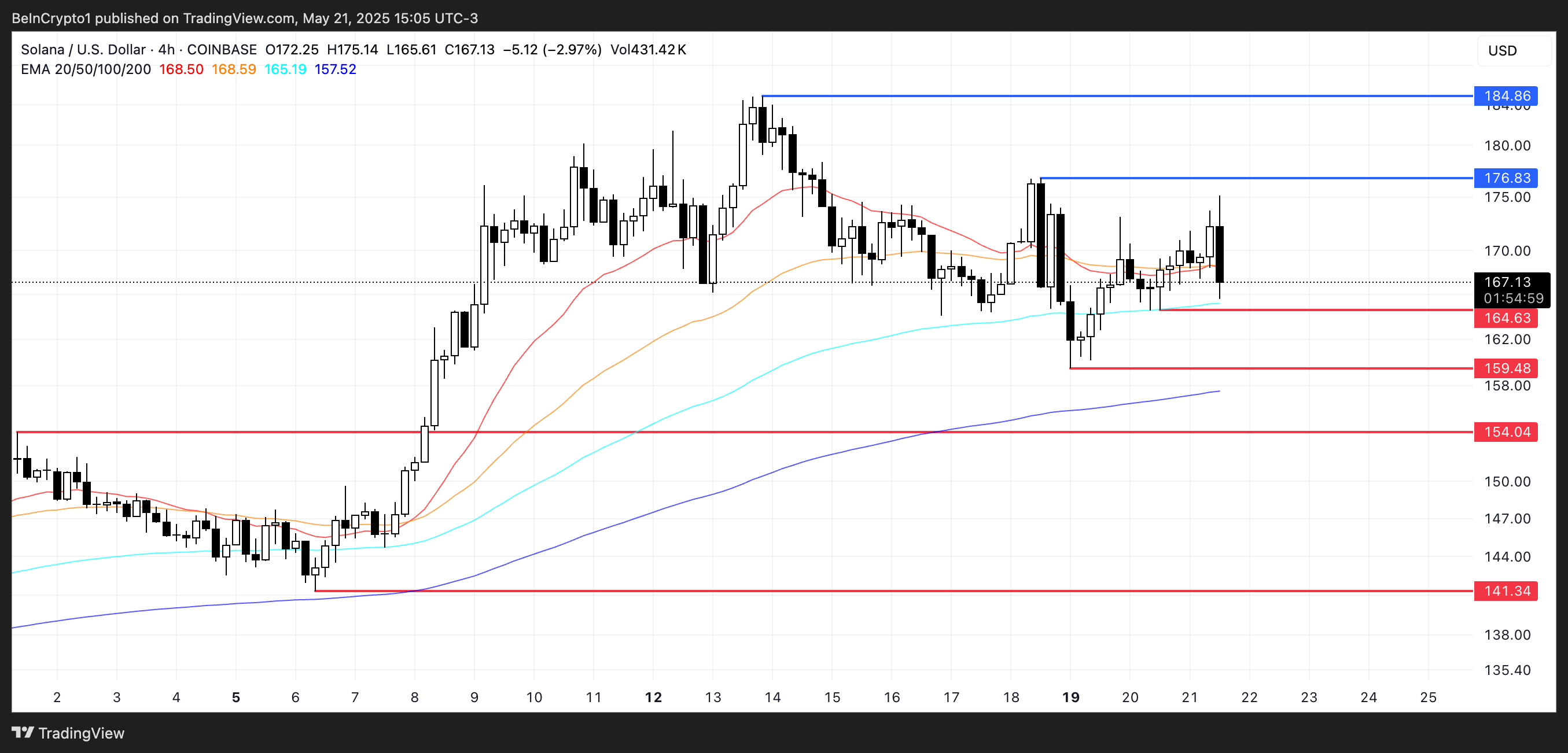
Despite a quiet altcoin market, analysts are comparing Solana’s structure to Ethereum’s in early 2021. On-chain inflows and developer activity continue to rise.
Meanwhile, the SEC delayed its decision on five Solana ETF proposals, pushing the timeline to mid-2025. Still, SOL rose 2.7%, showing resilience.
Technically, SOL is holding support at $164. If this holds, it could test $176.83 and $184.86. If $164 fails, the next supports are $159.48, $154, and $141.
Pi Network (PI)
Pi Network has faced several major setbacks since its mainnet launch in February 2025, quickly becoming one of the most hyped Made in USA coins. These include a lack of Binance or Coinbase listings, poor price performance, and unfulfilled ecosystem promises. Despite 86% of the community voting for a Binance listing, no listing has occurred.
Still, PI is showing signs of short-term strength. It’s up nearly 10% in the past 24 hours, breaking above the $0.80 mark. Its market cap is nearing $6 billion again, and EMA lines suggest a golden cross could form soon.
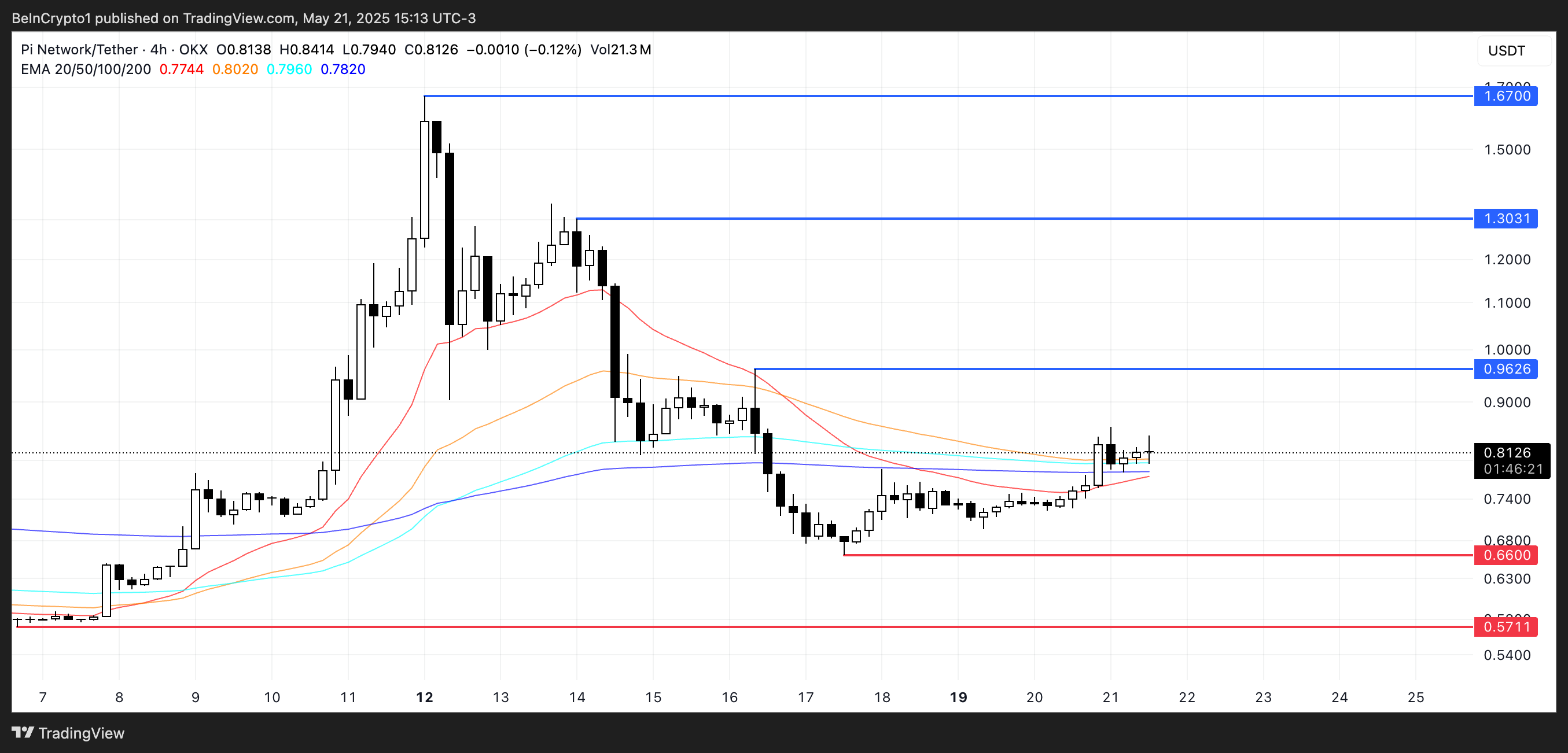
If the momentum holds, PI could test resistance at $0.96. A breakout could open room for rallies toward $1.30 and $1.67.
However, if the uptrend fades, PI could retrace to $0.66. If that level fails, the next supports are $0.57 and lower.
Uniswap (UNI)
Bancor has filed a patent infringement lawsuit against Uniswap, claiming that the leading DEX used its patented automated market maker (AMM) technology without permission.
Bancor says it developed and patented the constant product AMM model back in 2017, a structure Uniswap later adopted for its own protocol. The lawsuit, filed in New York, seeks compensation from both Uniswap Labs and the Uniswap Foundation, making UNI one of the most interesting Made in USA coins to watch next week.
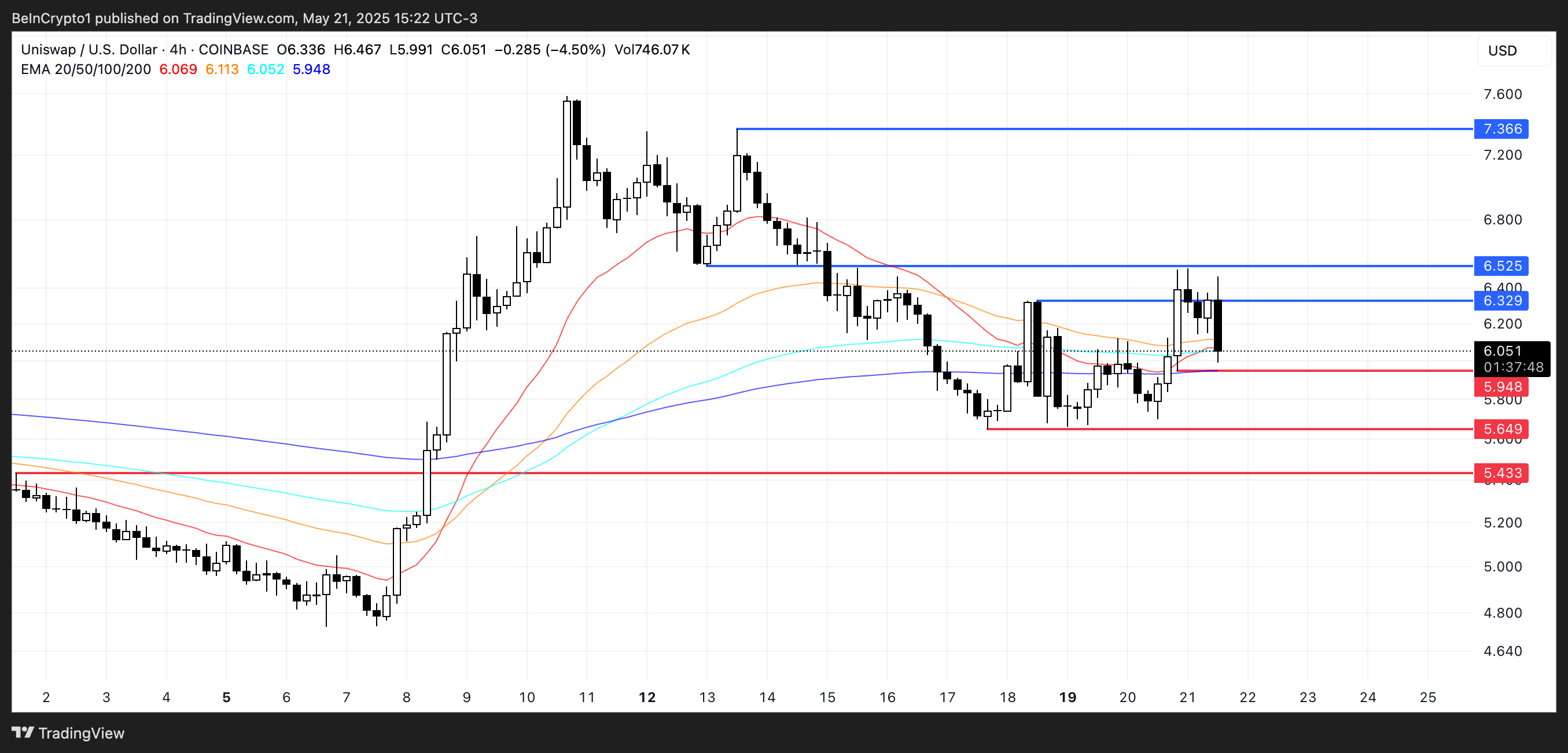
Meanwhile, UNI is trading near a key support level at $5.94.
If this level fails, it could drop to $5.649 and even $5.43. On the upside, a momentum recovery could send UNI back to test $6.329. If broken, further resistance lies at $6.52 and $7.36.
Worldcoin (WLD)
AI-related tokens have been attempting a broader recovery in recent weeks, and Worldcoin (WLD) has remained a focal point during this period. The project has faced both regulatory setbacks and notable expansion efforts, keeping it in the spotlight in the last weeks.
Legal issues emerged in Kenya, where a high court ruled that Worldcoin violated privacy laws, ordering the deletion of biometric data collected from users.
Around the same time, Indonesia suspended its operations over regulatory and certification concerns. Despite these headwinds, Worldcoin recently launched in six major U.S. cities and revealed plans to distribute 7,500 biometric verification devices across the country.
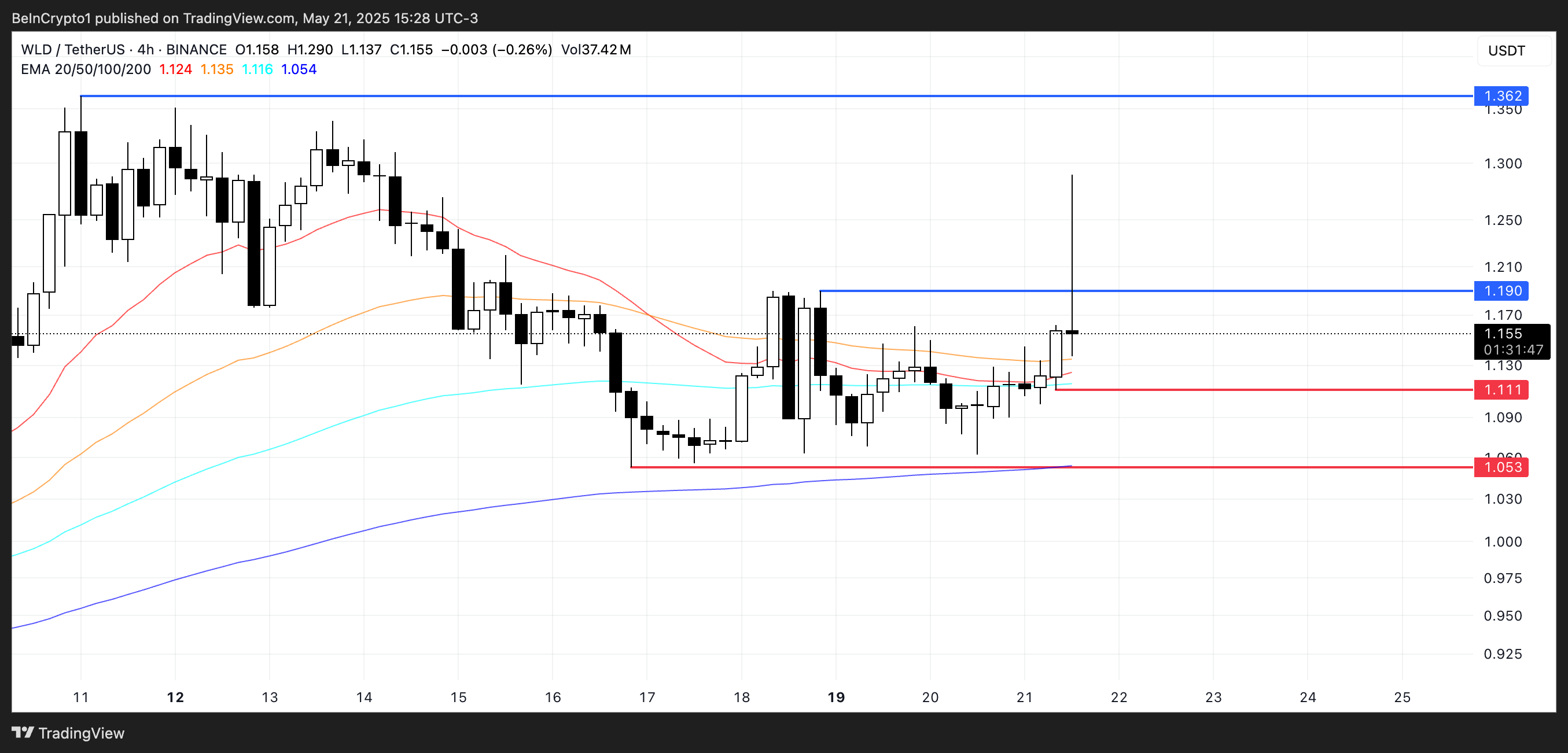
WLD is up 6.8% in the past 24 hours, showing signs of a short-term rebound. Its EMA lines suggest a golden cross could form soon, which would be a bullish technical signal.
If momentum holds, WLD could climb toward $1.19, and if that resistance breaks, extend gains to $1.36. However, if the token fails to hold above $1.11, it could slide to $1.05—and possibly dip below $1 if bearish pressure accelerates.
The post 5 Made in USA Coins to Watch for the Last Week of May appeared first on BeInCrypto.





 AI computing power scheduling system: intelligently optimizes mining strategies in real time based on market difficulty and currency price fluctuations
AI computing power scheduling system: intelligently optimizes mining strategies in real time based on market difficulty and currency price fluctuations